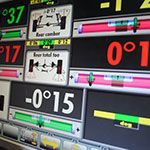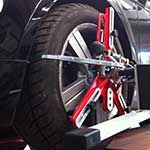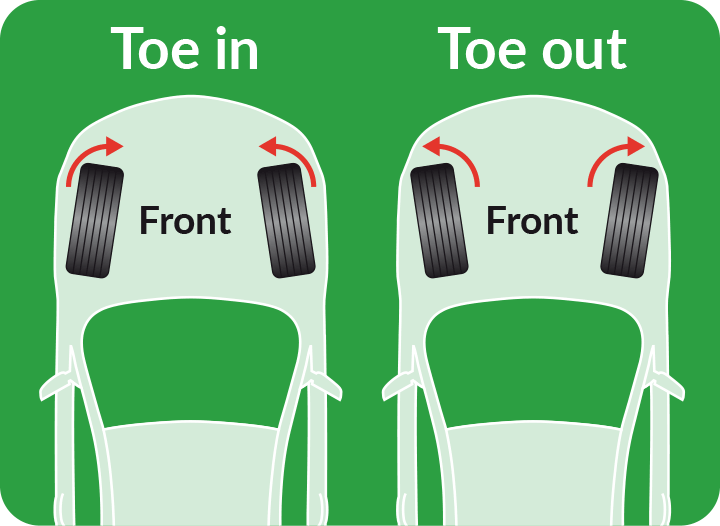
The use of the terms "toe in and toe out" describes whether the front edges of the tyres are closer together or further apart than the 'straight-ahead' direction. Or, put simply, imagine you are standing up straight with your feet about 10cm apart. Moving your toes outwards (away from each other) by a couple of cm each is 'toe out'. If you constantly walked along like this you would wear the inside edges of your shoes more than the outsides. Likewise, 'toe-in' will have the opposite effect.
Different types of vehicles generally require different "toe" settings depending on the way the wheels either pull towards each other or apart. A small amount of 'toe' is usually desirable for the rear tyres to increase friction and help keep them at the right temperature, especially in cold weather and therefore optimise road-holding.
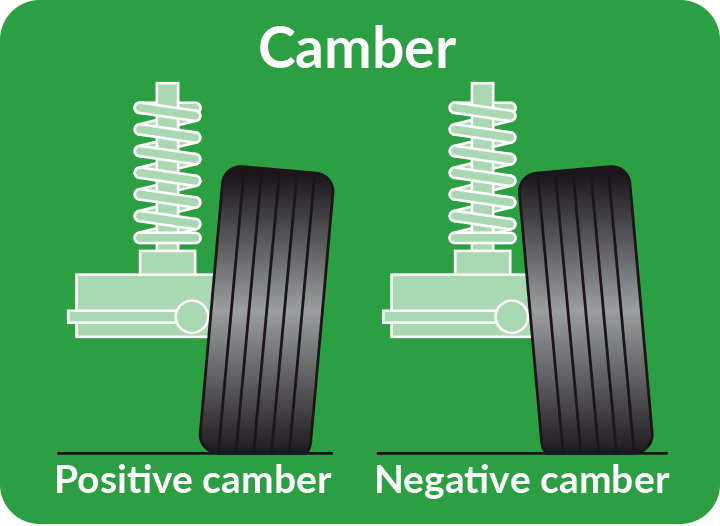
The term "camber" is used to describe the outward or inward tilt of the tyre compared to the vertical. The camber will also be set by the vehicle manufacturer though it may need to be adjusted periodically due to potholes in the road.
As with toe, a certain amount of camber is often desirable to achieve the best performance (grip to the road surface) from tyres, especially when cornering.
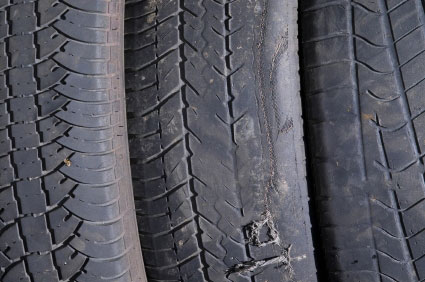
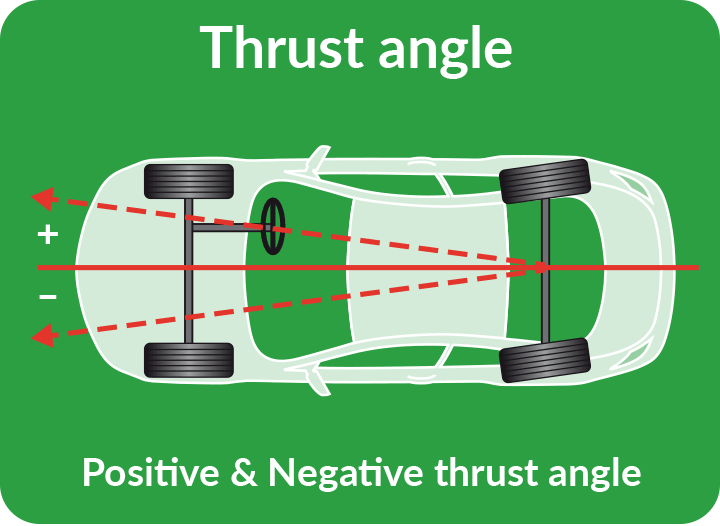
Another term often used by wheel alignment professionals is "thrust angle". This describes the angle of the rear axle (usually an imaginary rear axle these days) to the centre line of the vehicle. Imagine driving a fork lift truck where the steering is at the rear. A very slight movement of the rear wheels will send the truck off in a very different direction to the centre line. In other words road vehicles are very sensitive to thrust angle and it's more important than many people realise! '4-wheel' or '3-D' alignment systems measure the vehicle's thrust angle and on some cars it's now possible to adjust it to bring it to zero. If it's not possible to adjust this, then the software in the alignment computer will take account of it and advise the correct adjustments in the front wheels to compensate.
Drivers should monitor unusual wear on their tyres such as increased wear on the inside or outside shoulder of the tyre, this is a clear sign of misaligned wheels through any of toe-in, toe-out, camber or thrust angle.

